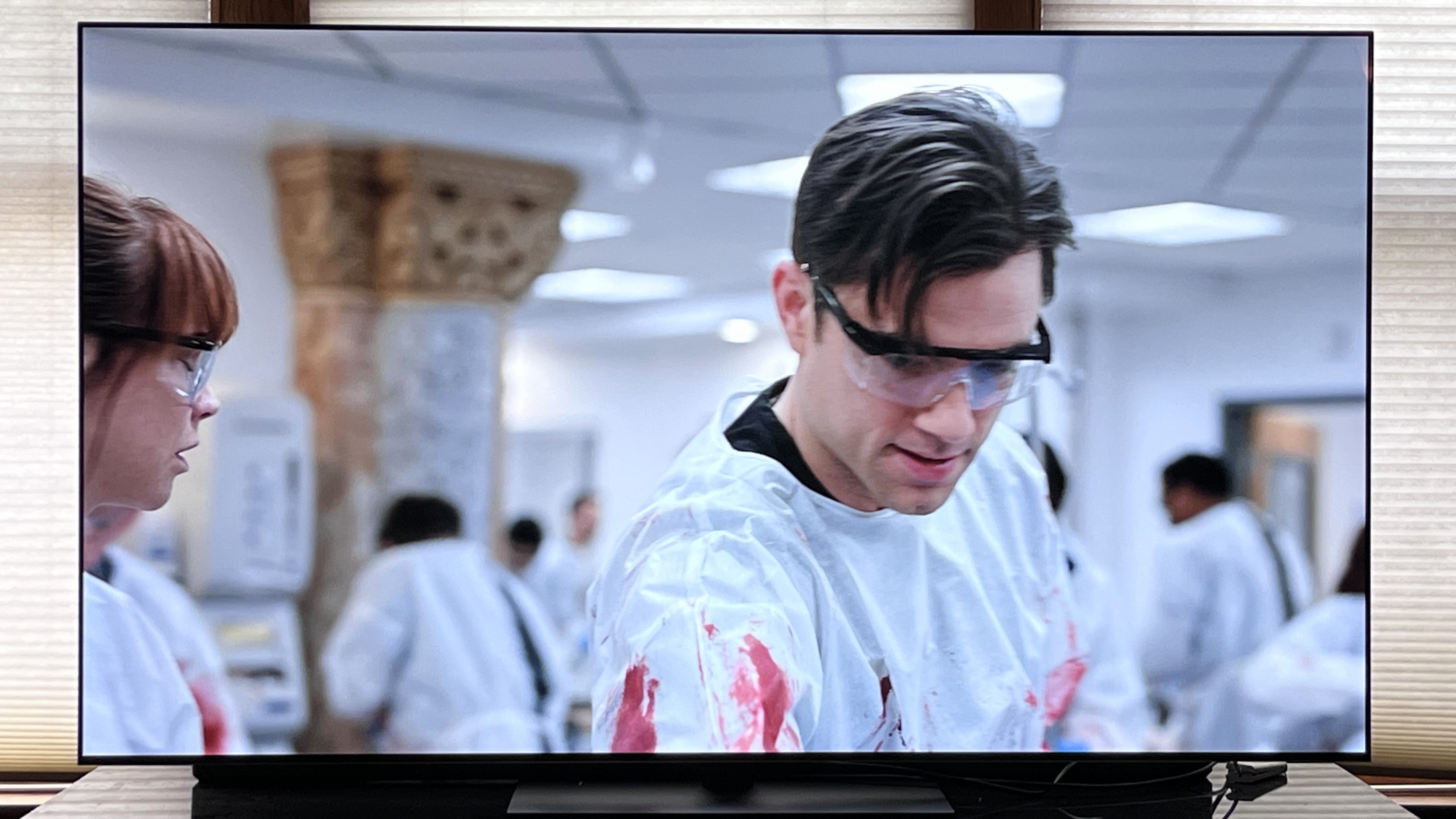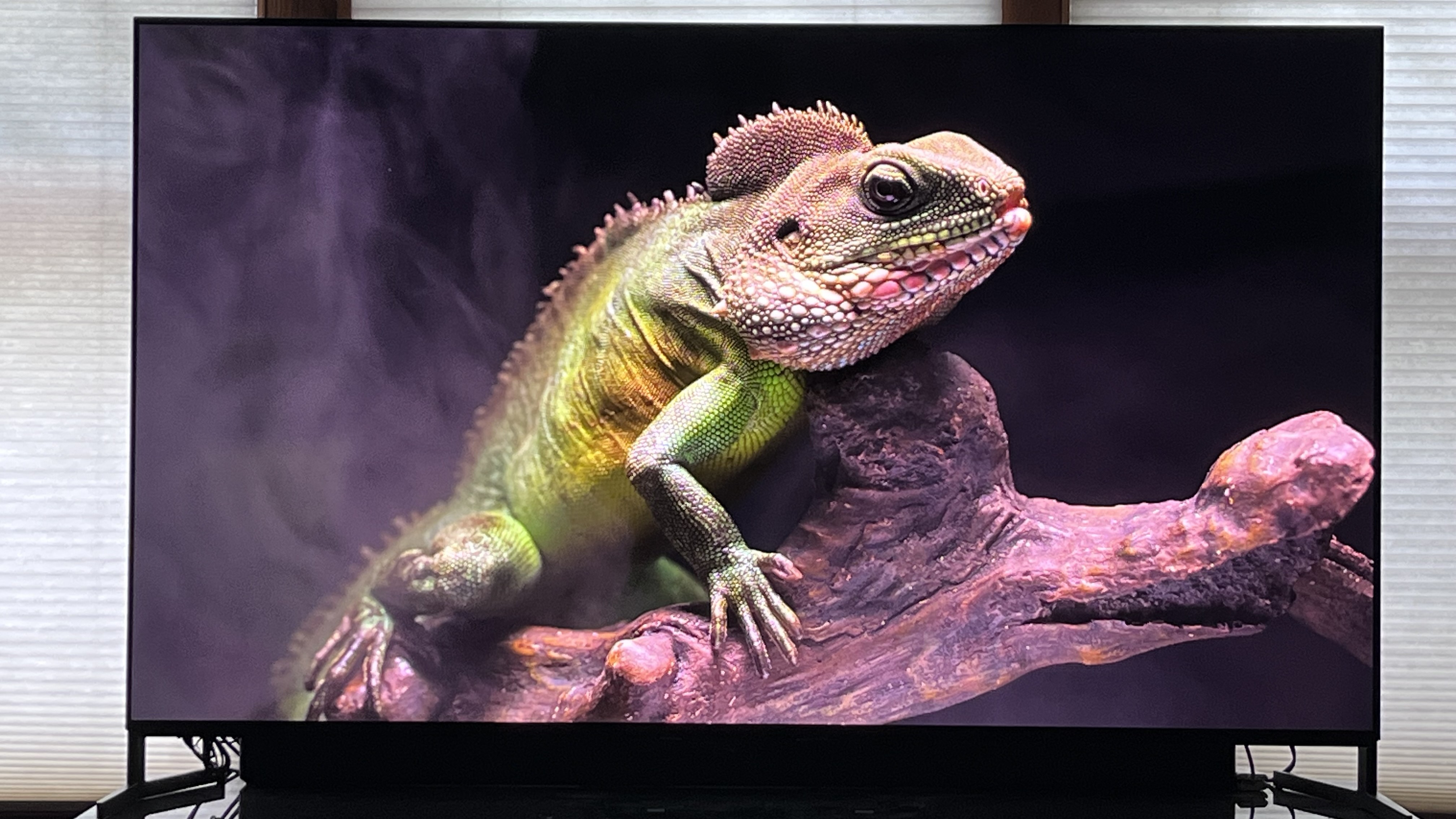I tested the Sony Bravia 8 II OLED TV, and I don’t think Samsung and LG have anything to worry about

The Sony Bravia 8 II is the company’s top OLED TV for 2025, and at $3,500 / £2,999 / AU$3,999, it’s priced at the level you’d expect for a flagship Sony TV.
The Sony Bravia 9, the company’s flagship mini-LED model, was one of the best TVs I reviewed in 2024, so I was very curious to get my hands on Sony’s new flagship OLED. A main reason was that Sony had claimed the new model would be 50% brighter than its Sony Bravia 8 predecessor, an advancement made possible by the company’s switch from a standard W-OLED panel, the type used in last year's Bravia 8, to a QD-OLED panel for the Bravia 8 II.
While our Sony Bravia 8 OLED review was positive overall, the TV’s peak brightness measured significantly below what we’d seen from the best OLED TVs of 2024, such as the Samsung S95D and LG G4. New flagship OLED TVs in 2025 are now even brighter than last year’s models, with the LG G5 measuring 2,268 nits peak brightness, a level that surpasses many of the best mini-LED TVs, when I tested it.
Brightness matters

The LG G5 features a new “four-stack” OLED display panel, which LG calls the Primary RGB Tandem Structure. Unlike previous panels, which use two blue OLED layers plus a third with red, green, and yellow elements, LG’s new design produces light via individual red, green, and blue layers. This design results in improved color detail and, notably, increased peak and fullscreen brightness. (See chart below for a benchmark comparison between the Sony Bravia 8 II, LG G5, and competing OLED TVs.)
The G5’s exceptional brightness had a real impact on its picture quality when I reviewed it. Movies with HDR had a near-3D quality due to the picture’s powerful contrast, which made bright highlights in pictures gleam with a high level of intensity. Colors also looked bright, which gave them a vivid quality without looking unnatural or boosted.
Another important factor with the G5 when I tested it was its ability to retain strong contrast when viewing in bright room lighting conditions, something helped by its anti-reflective screen. This made it a great TV for viewing daytime sports, and movies and darker TV shows also held up very well in bright lighting.
I’ve just started testing the 65-inch model of the Sony Bravia 8 II, so I’m only able to make preliminary judgments about its performance at this point. But as you can see in the brightness benchmark chart above, it does indeed have a brightness boost over last year’s Bravia 8, which maxed out 817 nits peak and 182 nits fullscreen brightness.
Sign up for breaking news, reviews, opinion, top tech deals, and more.
The Bravia 8 II's peak brightness (measured in Cinema mode, the most accurate available picture preset) is about the same as the 65-inch Samsung S90F, that company’s mid-range OLED TV for 2025, and another TV that uses a QD-OLED display panel. Fullscreen brightness is notably lower on the Bravia 8 II compared to the S90F, however.
As I said above, I’m just starting my subjective testing of the Sony Bravia 8 II, so I’ve yet to get a full sense of its capabilities. The Bravia 8 II’s lower brightness compared to the LG G5 (and also several flagship mini-LED TVs I’ve recently tested) means its picture has less of a vibrant pop when viewing in daylight conditions, and its color, while undoubtedly accurate (see picture accuracy chart), also appears a bit less vibrant.
Is the price right?

At $3,500 / £2,999 / AU$3,999 for the 65-inch model, the Sony Bravia 8 II is priced around the same as new flagship OLED TVs such as the LG G5 and Samsung S95D. It has a premium design, along with a great set of audio features such as Acoustic Surface Audio+, which turns the TV’s OLED panel into a speaker, and Acoustic Center Sync, which lets it be used as a center channel when paired with compatible Sony speaker systems and soundbars.
It’s hard to ignore, though, that the new Samsung S90F 65-inch, an OLED TV with comparable brightness plus a superior set of gaming features, costs $1,000 less at $2,499 / £2,699 / AU$4,299 for this size. That’s quite a bit of cash that could otherwise be spent on 4K Blu-rays and other home theater goodies.
Does the Sony Bravia 8 II justify its premium price? We’ll soon have our review wrapped up, and at that point will provide complete thoughts on its performance and value.
In the meantime, the premium OLED TV competition is looking pretty tough for 2025, and Sony’s flagship model has plenty to prove.
You might also like

Al Griffin has been writing about and reviewing A/V tech since the days LaserDiscs roamed the earth, and was previously the editor of Sound & Vision magazine.
When not reviewing the latest and greatest gear or watching movies at home, he can usually be found out and about on a bike.
You must confirm your public display name before commenting
Please logout and then login again, you will then be prompted to enter your display name.